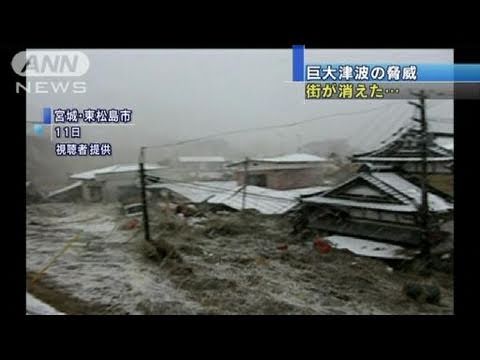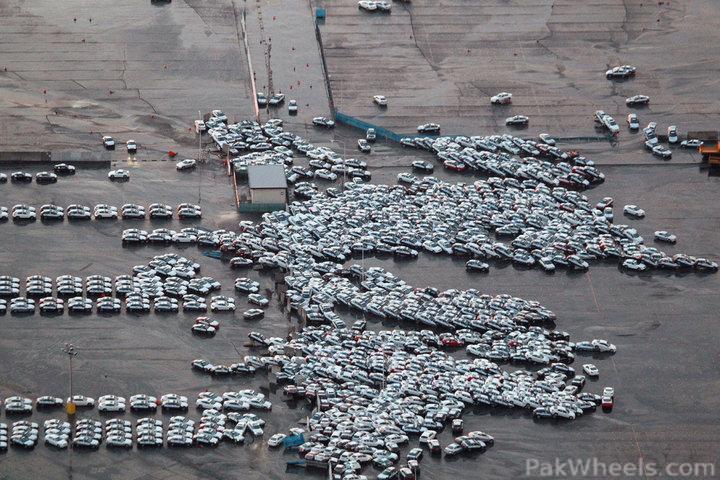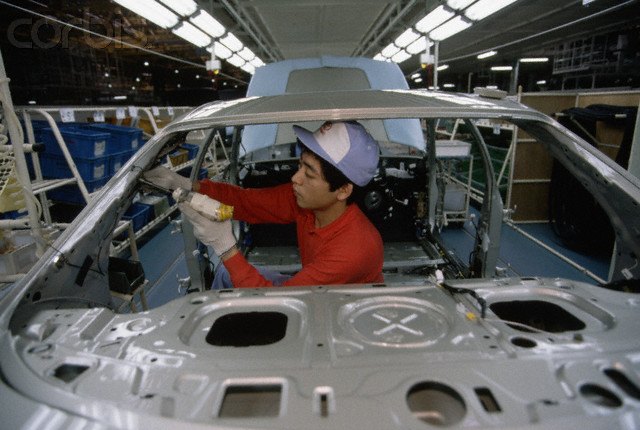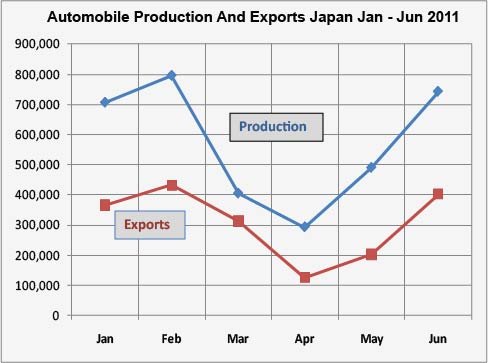#earthquake
Toyota Pauses Production at 9 Plants Following Weekend Earthquake
Japan was struck by a 7.1 magnitude earthquake over the weekend. The Fukushima and Miyagi prefectures were hit the hardest, offering a physical reminder of the 9.0 magnitude quake that devastated the region in 2011. Scientists have claimed that Saturday’s tremor was actually an aftershock from the horror show that occurred a decade earlier.
While still a large systemic event, authorities aren’t reporting widespread injuries or even damages. However, many citizens were left without power and numerous industrial facilities were idled for inspection. This includes automakers, with Toyota making an announcement that it will be stalling nine factories for several days this week. Though only some of that time is needed for safety assessments. The automaker is fretting over a batch of suppliers that were impacted by the quake and is anticipating a parts shortage.
Mexican Auto Industry Undeterred by 7.1 Magnitude Earthquake
Automakers spent Wednesday surveying factory sites in Central Mexico after a 7.1 magnitude earthquake ravaged the region Tuesday evening. However, after some momentary shutdowns, it’s looking like business as usual for most manufacturers. Despite countless injuries, over 200 fatalities, and widespread damage yet to be fully assessed, the automotive industry emerged from the quake largely unscathed.
Arguably the hardest hit, Volkswagen Group’s Puebla plant temporarily halted assembly so workers could inspect buildings for damage. Finding no significant structural harm, factory employees resumed third-shift production of the Jetta and Golf.
Audi’s crossover plant, also in the state of Puebla, sustained no obvious damage. It’s second shift was halted early on Tuesday as well. The company said third-shift production was canceled so that employees could attend to their loved ones after the quake.
Japanese Earthquake Disruptions Hit North America; GM Idles Four Plants
Four General Motors assembly plants in the U.S. and Canada will be closed temporarily due to supply chain disruptions caused by last week’s earthquakes in Japan.
The automaker announced today that four plants — Spring Hill, Tennessee; Lordstown, Ohio; Fairfax, Kansas; and Oshawa, Ontario — will be idled for two weeks starting on April 25.
While You Were Sleeping: Cheap Chevy Volt, Tesla and Fisker Do Things Online and Iran Wants F1
Even though the first-generation Chevrolet Volt has had its price slashed every year since its debut, the next-generation range-extended electric vehicle will be priced even lower. This aims GM’s offering squarely at a number of more traditional hybrids.
Inside The Industry: An Unsung Hero Recalls How A Worldwide Crisis Was Averted
After the March 11 monster earthquake and tsunami wiped out large parts of Japan, headlines focused on the near-meltdown of Fukushima. Recently, I learned that there was a strong likelihood of a worldwide economic meltdown, caused by a microchip factory 80 miles south of Fukushima. Here is the story of how the crisis was contained.
Japan's Carmakers Plan For The Worst
Japan’s carmakers are preparing for the next big one, and move to higher ground, says The Nikkei [sub]. Many Japanese car plants are near or next to the water, some on reclaimed land. Large level tracts are rare in Japan, and by building cars at the waterfront, the ship can come to your loading dock. After the March 11 earthquake and tsunami, perspectives changed.
One Year After The Disaster, A Visit To A Symbol Of The Recovery: Toyota's Prius C Plant
Today, at 2:46 pm, Japan came to a stand-still, again. Trains and subways stopped. People did fold their hands, faced in the general direction of the northeastern coast of Tohoku, and said a silent prayer. Japan and the world marked the one year anniversary of the earthquake and tsunami that left whole towns razed, more than 19,000 people dead or missing, 344,000 people displaced, and a large area around the destroyed Fukushima Daiichi power plant off-limits for decades, if not permanently.
Writers often like to equate the power released by the quake to the nuclear bombs that had been dropped on Hiroshima and Nagasaki. Depending on who you read and believe, it was anywhere between 31,700 and 600 million Hiroshima bombs. Large parts of the coastal areas are dotted with huge, neatly stacked piles of rubble which nobody wants to take and nobody knows what to do with. The devastation was so big that it turned into an attraction on Google Earth. Considering the immense damage, it is amazing how quickly the country did rebound. On Friday, I visited what was presented to me as an emblem of the amazing turn-around, Toyota’s plant in Kanegasaki, Iwate Prefecture. Here, 1,700 employees are working overtime to build Toyota’s Aqua / Prius c, for which everybody is screaming.
After Two Floods, Honda Tanks, Nissan Soars
When the March 11 tsunami hit, observers thought that of Japan’s major automakers, Honda would be the least exposed. Most of its global production already is outside of Japan. Very few cars that are produced in Japan are exported. Toyota and Nissan looked much more vulnerable. Distrust predictions: Today, Honda presented the results for the last quarter of 2011. The numbers look uglier than the cars in the video.
Japanese New Car Market Worst In Decades
The Japanese car market is in the midst of the worst crisis since 1978. The Japan Automobile Manufacturers Association expects auto sales in Japan to fall to a 34-year low in the current fiscal year that ends in March 2012. This as a result of the severe production drop, triggered by the March 11 earthquake and tsunami.
Nissan's Only Problem: Not Enough Cars
Pronounced near-dead in 1999, Nissan has made a remarkable, but often unnoticed turn-around ever since. With little fanfare, the Yokohama company passed Honda as Japan’s second largest auto maker. In China, the land of car growth, Nissan sold 1.3 million cars last year, became largest Japanese brand and has expansion plans for 2.3 million. Nissan is also the company that recovered fastest from the March 11 tsunami. With only 25 percent of its world output in Japan, Nissan had less exposure that Honda, and especially Toyota. It also was lucky: Nissan could duck the chip shortage that hit Toyota and Honda with full force. Nissan’s engine factory in Iwaki is 60 miles away from Fukushima. A little closer, and it would still be closed. Instead, it was back up and running two months after the disaster. One of the most horrific years for Japan and the Japanese auto industry is shaping up to be the defining year for Nissan. Nissan’s biggest problem: Not enough cars.
Japanese Parts Paralysis, Take 2
Now that the effects of the March 11 tsunami are behind the Japanese auto industry, carmakers are pulling out all stops to make up for lost volume. Only to run into new problems: “Shortages of tires and other autoparts are a growing concern,” reports The Nikkei [sub]. The new shortage is tsunami-unrelated. Its reason: Bad old supply and demand.
Watch Out, Wolfsburg: Toyota Expects To Exceed 8 Million In 2011, Has Big Plans For Next Year
The race for bragging rights amongst the top three promises to stay interesting throughout the year. Toyota just issued new forecasts which pegs global production across all Toyota Motor Corp. brands at 8.04 million. This should worry Wolfsburg. Volkswagen was seen as the clear number 2 after GM in the 2011 race. Now matters are not so sure.
Toyota's Financials Hit By Earthquake
Toyota today announced financial results for the quarter ended June 30, 2011. It was the first full quarter after the March 11 earthquake and tsunami which severely affected production and sales at home and abroad. The results reflect this.
This Is A Tsunami Wave
The Japanese auto industry slowly but surely is clawing back from the abyss created by one of the worst disasters that were visited upon the island nation. Following the March 11 earthquake and tsunami, the industry had crashed. Three months later and earlier than thought, the industry is at near pre-disaster levels. Data released by the Japan Auto Manufacturers Association shows the June production at 742,431 units, only 13.9 percent below June 2010.
Japanese Auto Industry Loses 1.4 Million Units - Nissan Walks Away Unharmed
Today is the day when the Japanese majors announce domestic and global data for June and the half year. A little more than three months ago, a massive earthquake, followed by a devastating tsunami, paralyzed much of Japan’s infrastructure. It could not have come at a more inopportune time. The Japanese auto industry was already suffering from weak markets at home and abroad, paired with a rising yen that destroyed profits from exports. Three months later, how big was the hit?



























Recent Comments